$500,000 Settlement Following Nerve Damage From Varicose Veins Treatment
Case Overview Our client presented to a vascular surgeon, seeking treatment of her varicose veins in her right leg. Following the surgeon’s recommendation, our client
Gerard Malouf & Partners Manage Cases For Clients Across All Areas Of Personal Injury Law, Inheritance Disputes And Superannuation Disputes.
Gerard Malouf & Partners Have Provided Friendly, Experienced Legal Advice To Communities Across Australia For Over 35 Years. Our Personal Injury Lawyers Have Taken On Ten’s Of Thousands Of Cases And We Are Proud To Have Won Billions Of Dollars For Our Clients.
Meet The Diverse And Dynamic Team Of Compensation Lawyers And Supporting Staff That Have Made This All Happen Below. Our Multi-Lingual Team Can Discuss Your Claims In Arabic, Assyrian, Turkish, Greek, Italian, French, Serbian, Croatian, Armenian, Mandarin, Hindi, Punjabi Or Malayalam.
Read Our Latest Articles, Case Studies Or Commonly Asked Questions Concerning Your Legal Claims And Compensation Law.
In January 2018, our client was a passenger involved in a train accident. The train failed to stop as intended and collided with the buffer stop at the end of the platform resulting in our client being thrown forward and hit his knees on the barricade in front of him.
As a result of the incident, our client sustained post-traumatic chondromalacia of the patella caused by the direct blow to the front of both knees that occurred in the train accident. Our client also suffered from psychological symptoms including anxiety in respect of travelling on trains.
The Plaintiff contacted Gerard Malouf and Partners to enquire about making a claim for compensation for public liability. We immediately got to work in collating our client’s medical records and seeking information from the Defendant in relation to the incident. It was clear from the evidence gathered that the transport company had breached its duty of care as the driver did not slow the train at a crucial time when approaching the buffer stop at the end of the platform. This was clearly a negligent act giving rise to a compensable claim.
As a result of our in-depth investigations, we were able to avoid the expense of obtaining an expert report. We commenced proceedings in the District Court of NSW and the Defendant filed its Defence in response to the Plaintiff’s Statement of Claim, admitting that it owed the Plaintiff a duty of care and had breached its duty of care in the circumstances.
Prior to the incident, our client was a 74-year-old man who was retired but enjoyed several recreational activities and did not have any significant pre-existing health issues. We had our client assessed by an orthopaedic surgeon and a psychiatrist. The psychiatrist provided a favourable report and diagnosed our client as suffering from a Chronic Adjustment Disorder with Anxious Mood (DSM 5 Diagnostic Criteria).
All evidence was collated and served on the Defendant and an informal settlement conference was conducted. During negotiations, we were able to achieve a favourable settlement for our client without the need of going through with a full-court hearing.
At Gerard Malouf & Partners we pride ourselves on our ability to bring positive results for our clients. If you have been a victim of a public liability accident contact us today to be certain that you are receiving the maximum compensation that you deserve.

When making a claim under the Act you become known as the ‘claimant’, and the person you are acting against becomes known as the ‘respondent.’ Before commencing proceedings against the respondent, the claimant must give written notice of the claim, which must contain the following:
Public liability refers to the responsibilities owners or occupants of a public space have to protect anyone who enters. If the owners or occupants fall short of these responsibilities, resulting in an injury, a case for compensation can be made.
Some of the most common incidents covered by public liability law include:
Following an initial meeting, the first task will be to establish the general facts of the case. This will include your medical diagnosis, which will need to be confirmed and documented by a doctor; and proof that the person or company at fault owed you a duty of care, which will need to be demonstrated. Together, this will show that your injury occurred when they breached that duty of care.
From there a further investigation will proceed—contacting and interviewing witnesses, speaking with expert consultants, and more—all in order to bolster the strength of your case even further. Only once this process is complete, and your claim can be demonstrated and proven in full, will the process move on to the next step.
Public liability claims enable you to recoup the financial and emotional costs of suffering an injury due to someone else’s negligence. Defendants regularly offer monetary settlements to claimants, particularly if they acknowledge liability and believe they would lose in court.
But should you accept the settlement or proceed to the later stages of litigation instead, where a judge will have the final decision? Every case is different, but here are some of the factors you may wish to consider before making your choice:
Case Overview Our client presented to a vascular surgeon, seeking treatment of her varicose veins in her right leg. Following the surgeon’s recommendation, our client
Case Overview A woman from Green Valley was a passenger in a car when the driver lost control of the vehicle, leading to a collision
Case Overview At the time of her injury, our client was working as a cleaner at a private residence in Kurrajong. During the course of
Case Overview We acted for a client from Western Sydney who was involved in a serious motor vehicle accident. The other driver collided into our
Case Overview We acted for a client from Coffs Harbour who was involved in a serious motor vehicle accident. The driver failed to give way
Case Overview Our client suffered multiple injuries following a car accident caused by a driver that had lost control of their motor vehicle. As a






Your location is currently:
Please wait while you are redirected to the right page...